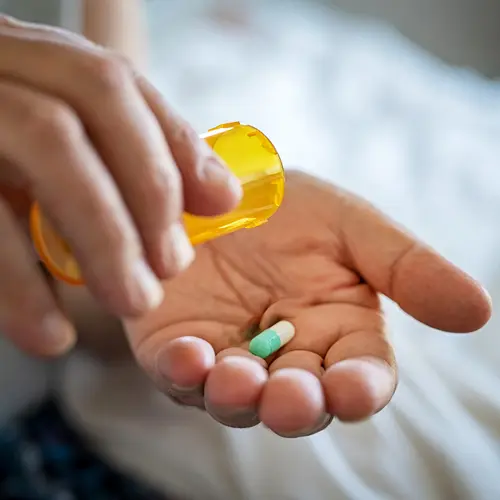Millions of Americans have ongoing back pain. It’s the leading cause of disability in people younger than 45, and many things can cause it.
Spine-Related Problems
Back pain often happens because something is off in the way your spinal joints, muscles, discs, and nerves fit together and move. Your doctor can check to see if you have:
Herniated or slipped discs: If your doctor mentions this, the soft tissue in the discs between your joints has come out. It’s usually caused by wear and tear. Herniated discs can cause pain in your lower back or hip because the nerves there are pressed.
Bulging discs: These protrude, or “bulge,” but not as much as with a herniated disc. You don’t usually have symptoms with this. You'll feel it if it pushes on a nerve root, though.
Degenerative disc disease: The discs, or “shock absorbers” between your spine’s vertebrae, shrink or tear. That causes the bones to rub together. This may happen as you get older.
Inflammation and wear of the sacroiliac joint: This lies where your spine and pelvis come together. It doesn’t move much, but it’s important because it moves the load of the upper body to the lower body. Swelling and wearing away of the joint cartilage can happen after an injury, because of arthritis, infection, or even pregnancy.
Spinal stenosis : If you have this, your spinal canal has narrowed. That adds pressure on your spine and nerves. As a result, your legs and shoulders probably feel numb. This happens to many people older than 60.
Cervical radiculopathy : This is a pinched nerve. It’s usually caused by a bone spur or a herniated disc.
Spondylolisthesis: This is when one or more of your vertebrae in the spine slip forward and out of place, typically in the lower back.
Spondylolis: Is a degenerative change in the spine, typically in the lower back. Arthritis is often associated with disc disease including herniation.
Accidents and Injuries
Car accidents, falls, muscle sprains, strains, and fractures are also causes of back pain. Injuries can lead to some of the physical problems, but some can cause pain all on their own.
Spine or vertebral fractures: A break to your spine can be causes by a hit to the back, a fall, or if you have osteoporosis, a condition that weakens your bones.
Sprains and strains: Injuries to ligaments, muscles, and tendons that support the spine and its joints can lead to back pain. This often happens when you lift something and twist at the same time. It can also happen because of car accidents and sports injuries.
Spasms: You can get these when muscles and tendons are torn in your lower back. They usually happen when you’re weightlifting or playing sports.
Lifestyle Triggers
Back pain can be brought on by things you do -- or don't do -- in your day-to-day life, like:
- Slouching at your desk
- Lifting heavy objects
- Being overweight
- Not exercising
- Smoking
- Wearing high heels
Emotions in Play
Don’t underestimate the power of feelings to bring on pain. Stress can lead to muscle tension in the back, and depression and anxiety may make the pain feel even worse.
Other Causes
Back pain can also be caused by medical conditions like:
Arthritis: This is a joint disease that causes stiffness, swelling, and inflammation.
Osteoarthritis: This type of arthritis happens when your cartilage and bones break down. This most often affects people from middle age onward.
Ankylosing spondylitis: This is a type of arthritis that affects your joints and ligaments along the spine.
Scoliosis, or curvature of the spine: This is usually something you have from birth. If there’s pain, it typically starts in mid-life.
Pregnancy: The weight you gain when you’re expecting can strain your back.
Tumors: In rare cases you can get them in your back. They’re usually spread by a cancer that started somewhere else in your body.
Less-common causes of back pain are:
- Kidney stones and infections
- Endometriosis, a buildup of uterine tissue outside the uterus)
- Osteomyelitis or discitis, infections in the bones and discs of the spine
- Fibromyalgia, a condition that causes widespread muscle pain
Depending on the cause of your pain, your treatment could include lifestyle changes, medication, or possibly surgery. Talk with your doctor if your back isn’t feeling right. They can help you discover what’s causing the hurt and can help you feel better.

